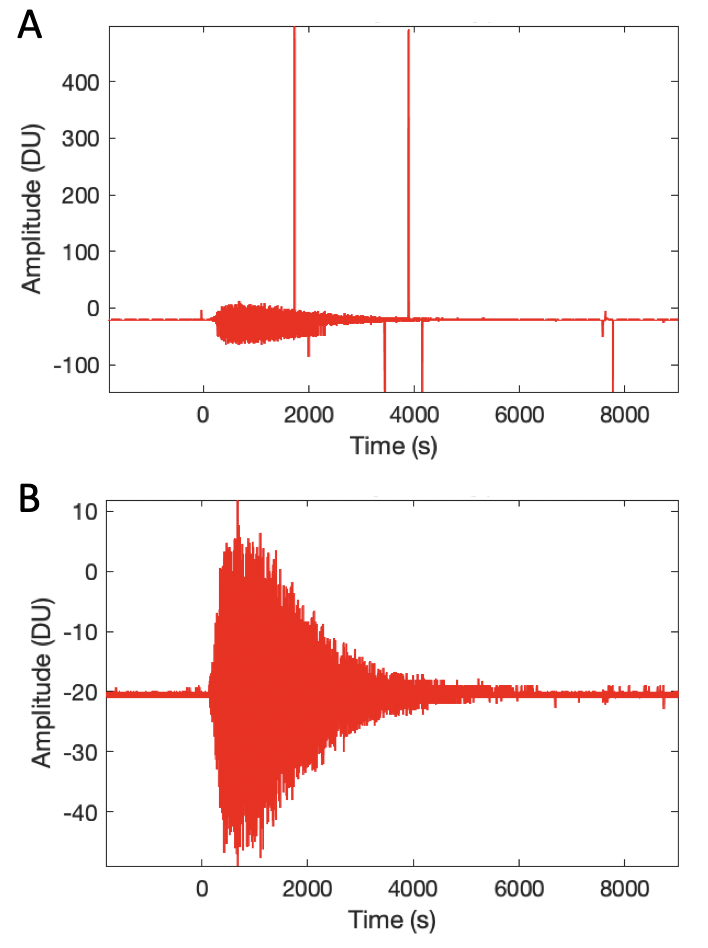Reprocessing Apollo seismic data
- 1Université Paris Cité, Institut de Physique du Globe de Paris, Planetary and Space Sciences, France (zxiang@ipgp.fr)
- 2Earthquake Research Institute, The University of Tokyo, Tokyo, Japan
The Apollo Passive Seismic Experiments recorded more than 13000 events on the Moon during 1969-1977 [1]. However, not all of these events were used in our previous studies on the Moon due to the degradation of the quality of the recorded data (Figure 1A). To make better use of Apollo seismic data, we propose several new methods to reprocess it. First, since Apollo seismic records sometimes contain invalid data in every station and component (including the short period component), we removed these invalid data from raw Apollo records using time and ground station number. Then we removed several special spikes with the help of amplitude histogram. This enables us to compute the envelopes for a larger number of moonquake events. Acceleration and displacement step responses are used to fit glitches using the Lagrange multiplier method. The ‘glitches’ we term here are artifact one-sided pulses in the raw data. We find that the instrument response parameters vary with time. So, we determined the instrument response parameters with the calibration signal and removed it near the event. Finally, we used the smoothed envelope to detect the single spike (spike with only one point) and removed it when exceeds the envelope. These new processing steps lead to considerably cleaner Apollo data (Figure 1B), yield a more accurate arrival time reading, and result in an envelope that reflects more realistic waveform characteristics. We expect that additional moonquake records will become available with these methods for future research. Further study of the instrument response variations of the Apollo seismometer will also provide a reference for the new lunar seismometers to be deployed in upcoming space missions.

Figure 1. An example of a comparison plot before (A) and after (B) Apollo moonquake data processing.
Reference:
[1] Nunn, C., Garcia, R. F., Nakamura, Y., Marusiak, A. G., Kawamura, T., Sun, D., et al. (2020), Lunar seismology: A data and instrumentation review. Space Science Reviews, 216(5), 89. doi:10.1007/s11214-020-00709-3
How to cite: Zhang, X., Lognonné, P., Kawamura, T., Samuel, H., Xu, Z., Sainton, G., Froment, M., and Onodera, K.: Reprocessing Apollo seismic data, Europlanet Science Congress 2022, Granada, Spain, 18–23 Sep 2022, EPSC2022-846, https://doi.org/10.5194/epsc2022-846, 2022.

